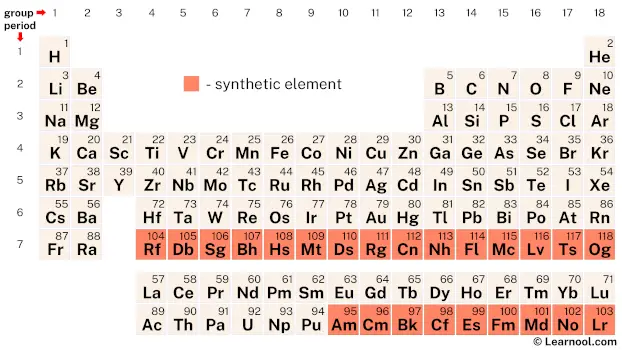
Synthetic elements, also known as artificial elements or man-made elements, consist of a series of 24 chemical elements on the periodic table. These elements span from atomic number 95 to 118, specifically from americium (Am) to oganesson (Og). They are not naturally occurring on Earth and are produced through nuclear reactions in particle accelerators or by bombarding target atoms with high-energy particles. As a result, they are commonly referred to as “artificial” or “man-made” elements.
The first synthesis of synthetic elements took place between 1944 and 2010, which marked significant advancements in our ability to create these elements through scientific experimentation and technological advancements. Synthetic elements exhibit a wide range of half-lives for their isotopes, with the longest-lived isotopes having half-lives ranging from microseconds to millions of years. Due to their relatively short half-lives, most synthetic elements are primarily used for research purposes and have never been produced in large quantities. For example, element 106, seaborgium (Sg), has a half-life of about 2.4 minutes, which makes it highly unstable and challenging to study in significant quantities.
On periodic table
| group | ⇨ | 1 | 2 | 3 | 4 | 5 | 6 | 7 | 8 | 9 | 10 | 11 | 12 | 13 | 14 | 15 | 16 | 17 | 18 |
| period | ⇩ | ||||||||||||||||||
| 1 | 1 H 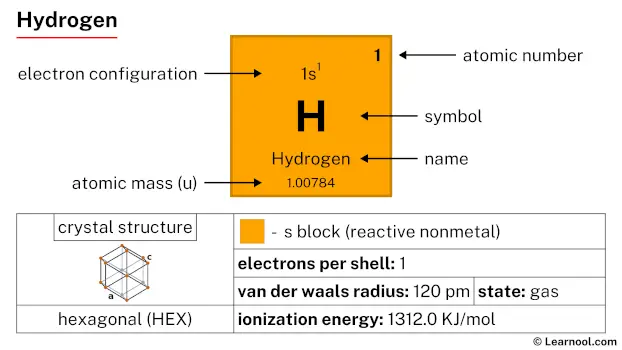 Hydrogen |
2 He  Helium |
|||||||||||||||||
| 2 | 3 Li  Lithium |
4 Be 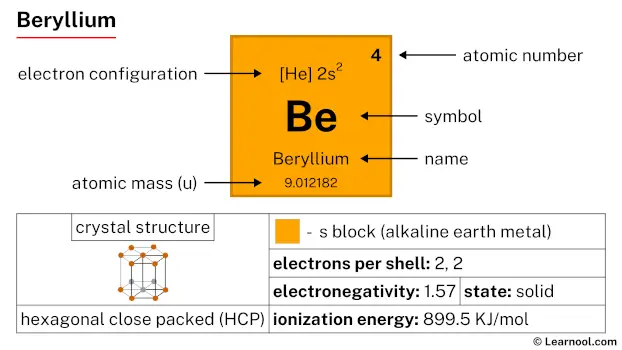 Beryllium |
5 B 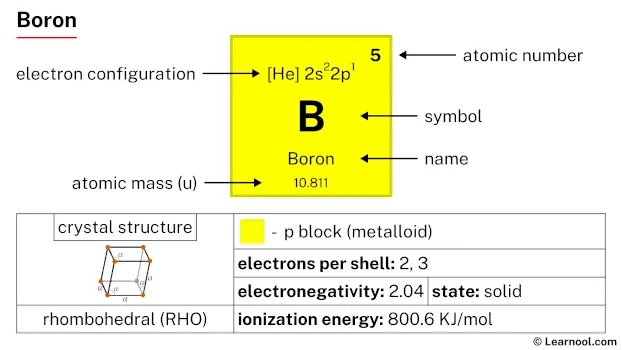 Boron |
6 C  Carbon |
7 N 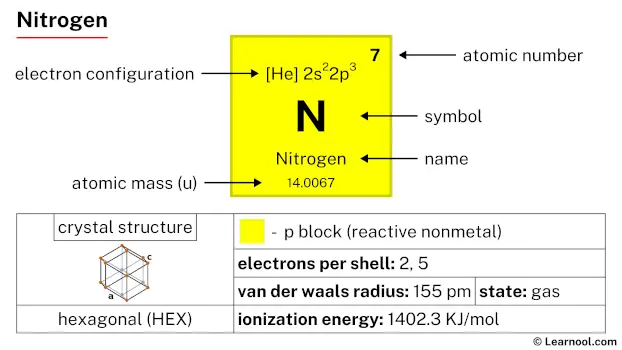 Nitrogen |
8 O 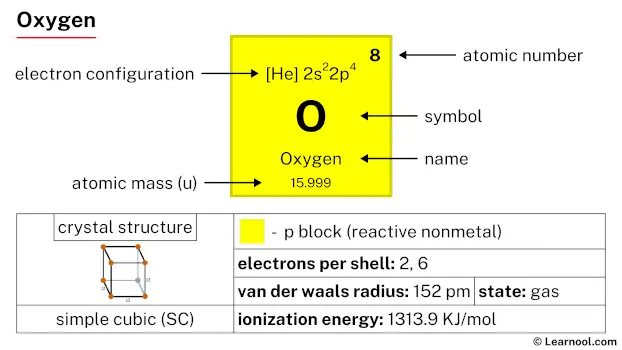 Oxygen |
9 F 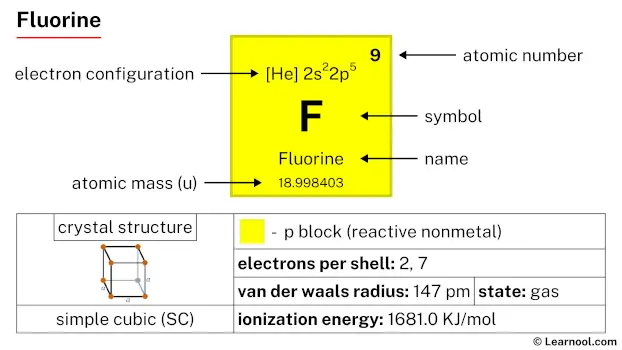 Fluorine |
10 Ne 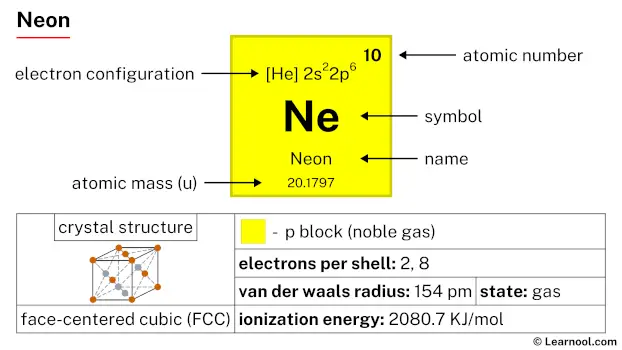 Neon |
|||||||||||
| 3 | 11 Na 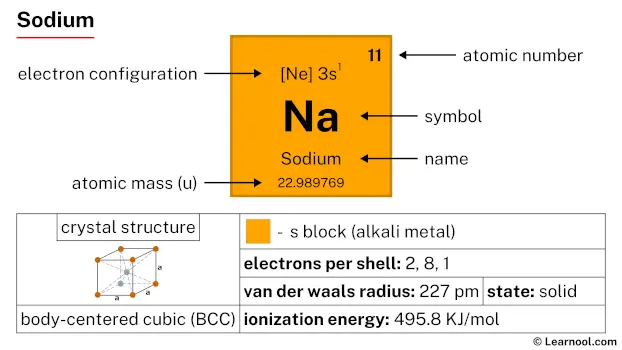 Sodium |
12 Mg 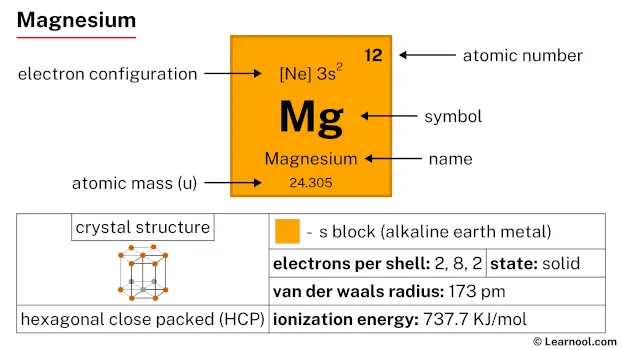 Magnesium |
13 Al  Aluminium |
14 Si Silicon |
15 P 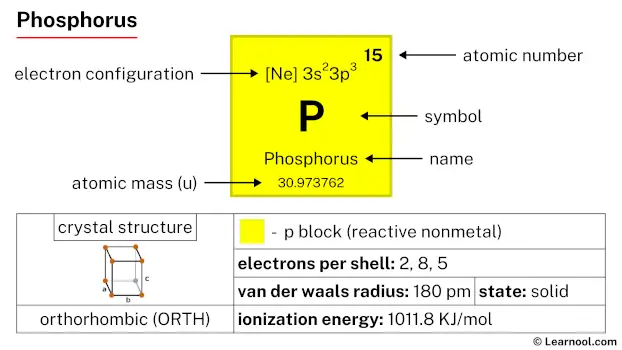 Phosphorus |
16 S 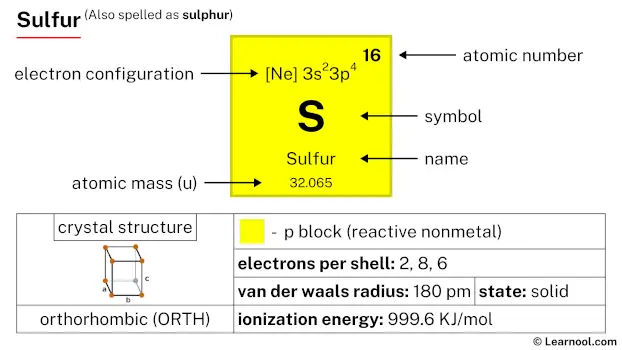 Sulfur |
17 Cl 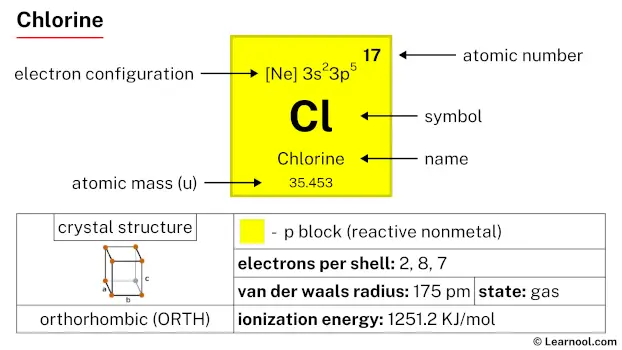 Chlorine |
18 Ar 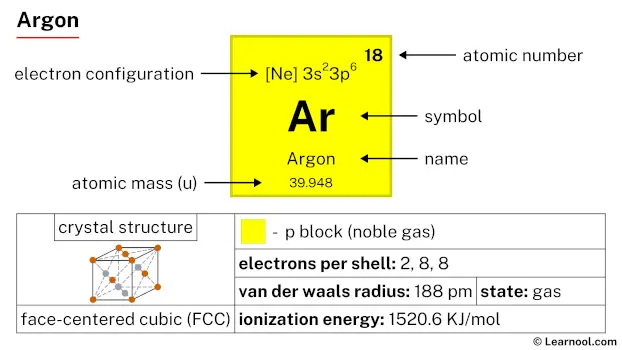 Argon |
|||||||||||
| 4 | 19 K 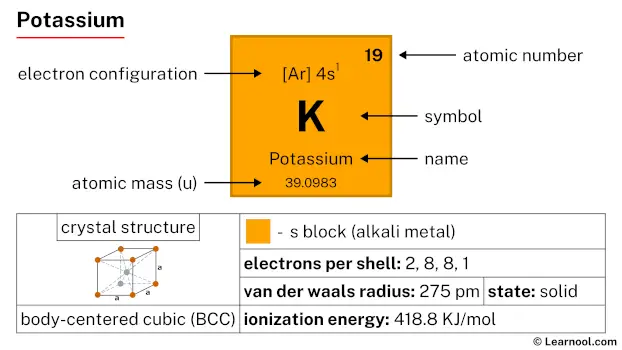 Potassium |
20 Ca 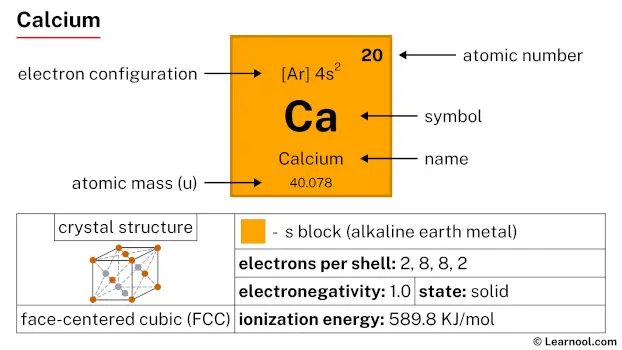 Calcium |
21 Sc 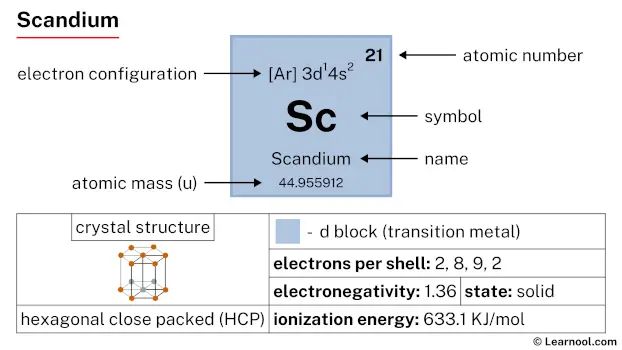 Scandium |
22 Ti 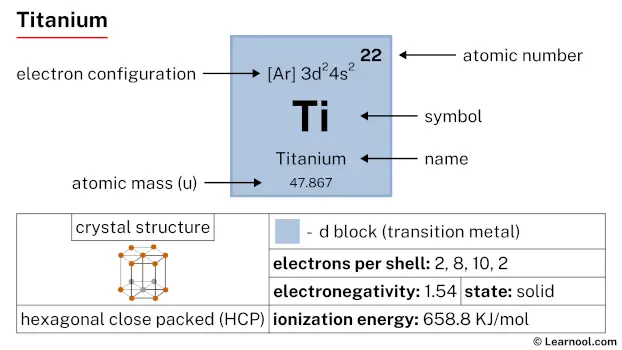 Titanium |
23 V 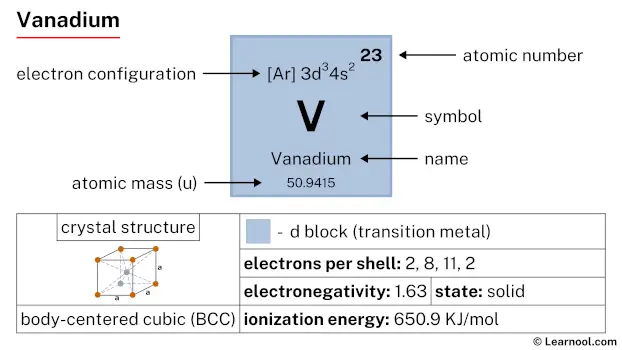 Vanadium |
24 Cr 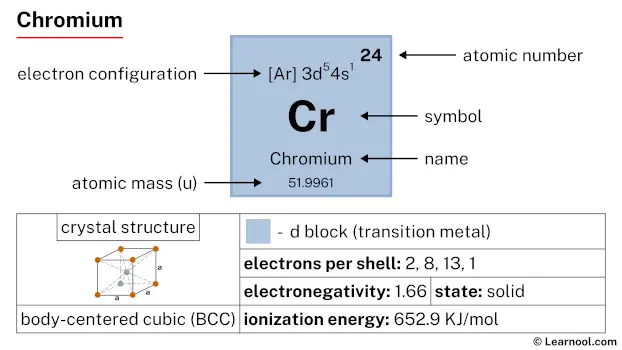 Chromium |
25 Mn 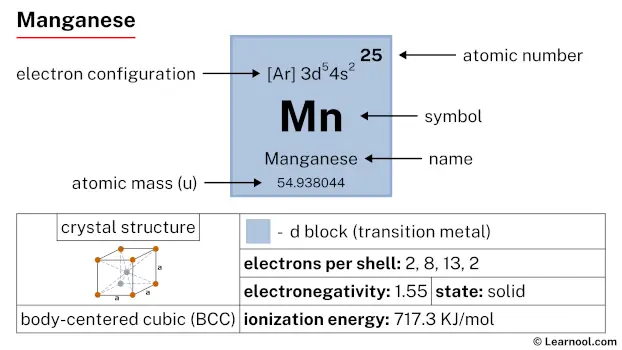 Manganese |
26 Fe 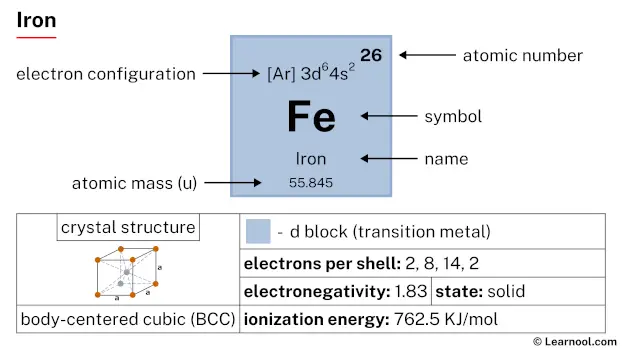 Iron |
27 Co 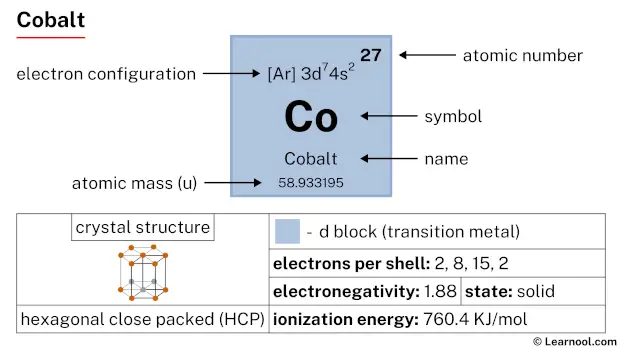 Cobalt |
28 Ni 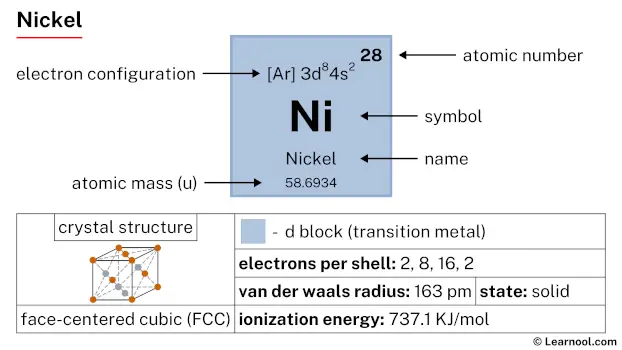 Nickel |
29 Cu 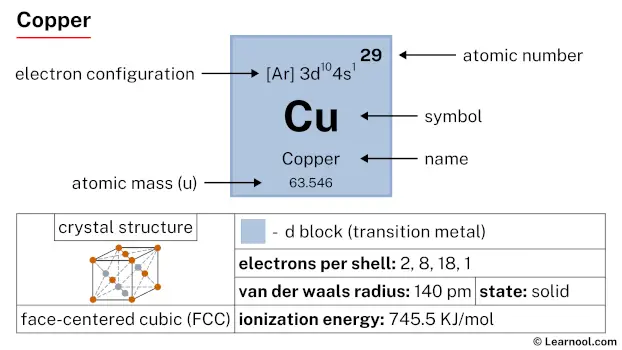 Copper |
30 Zn  Zinc |
31 Ga 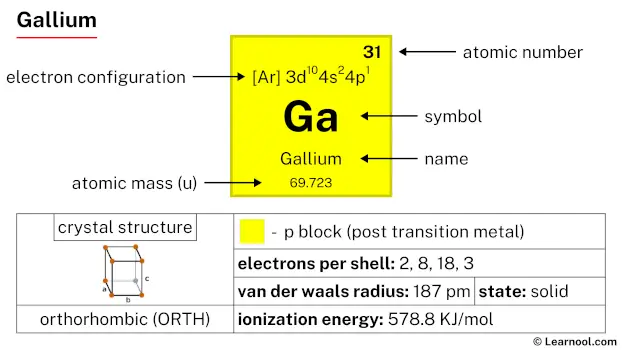 Gallium |
32 Ge 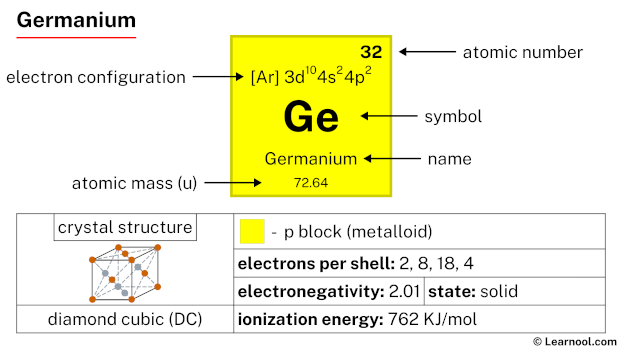 Germanium |
33 As 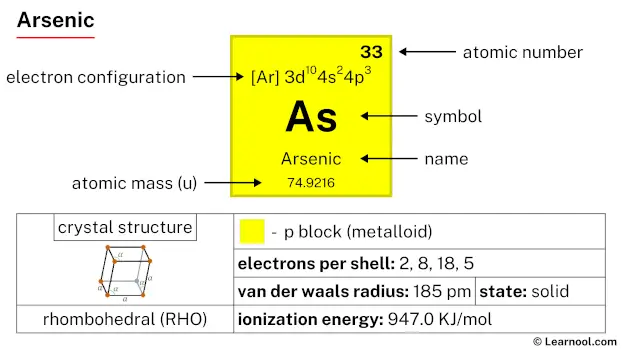 Arsenic |
34 Se 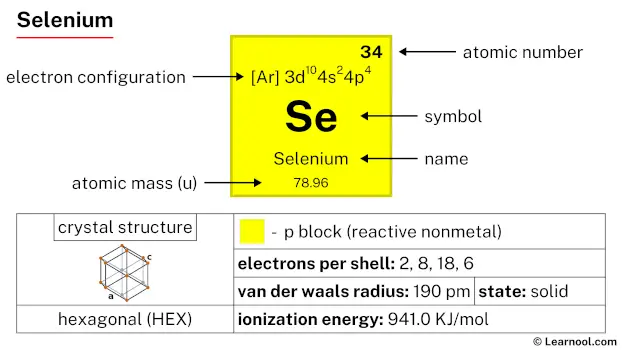 Selenium |
35 Br 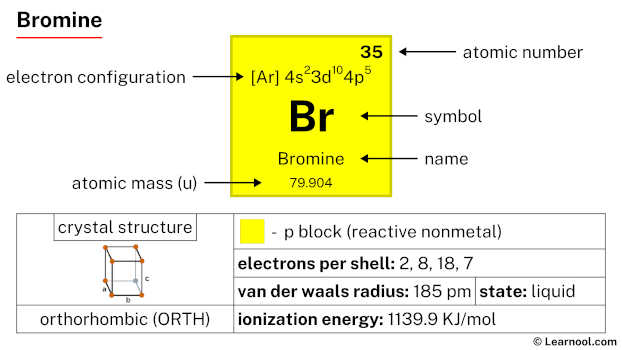 Bromine |
36 Kr  Krypton |
|
| 5 | 37 Rb 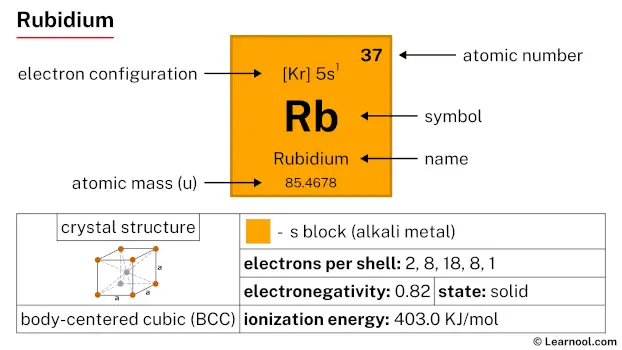 Rubidium |
38 Sr 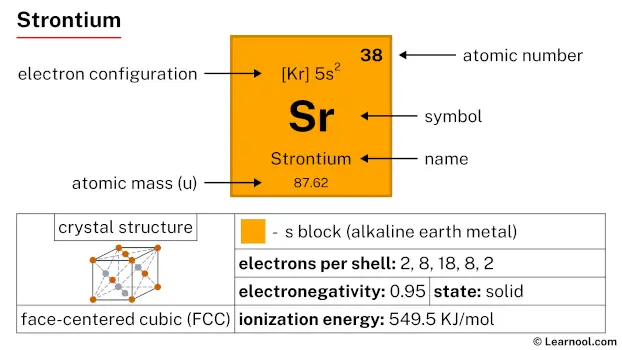 Strontium |
39 Y 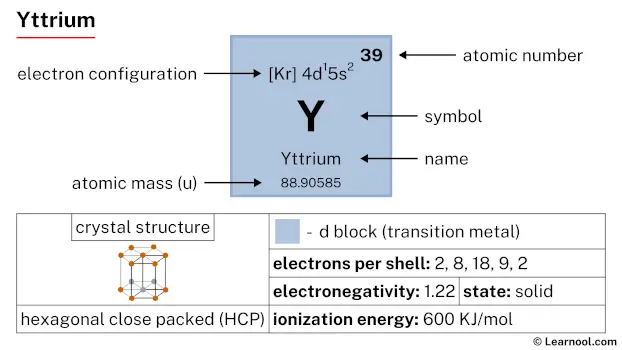 Yttrium |
40 Zr 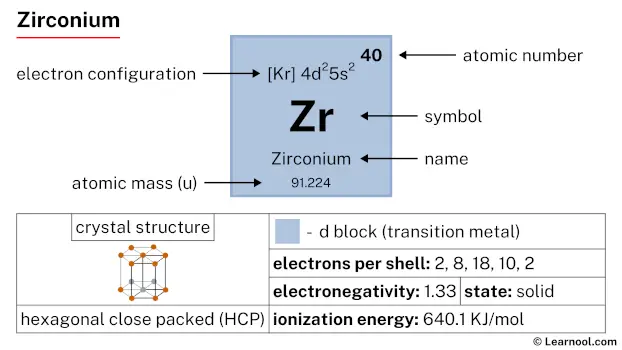 Zirconium |
41 Nb 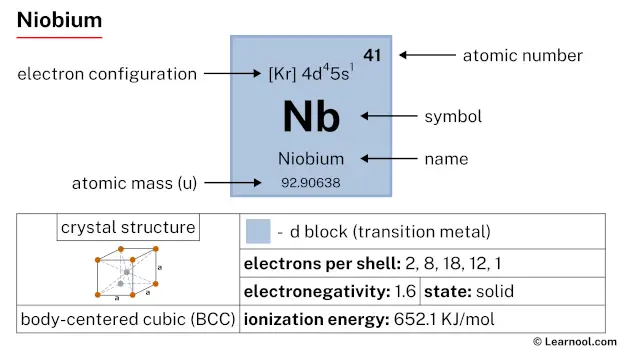 Niobium |
42 Mo 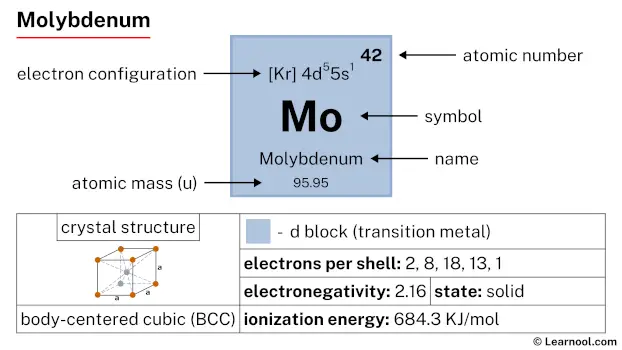 Molybdenum |
43 Tc 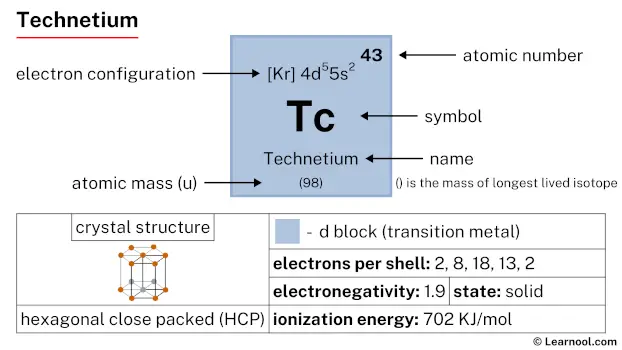 Technetium |
44 Ru 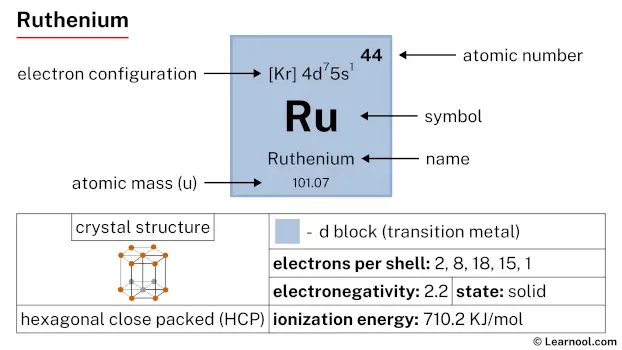 Ruthenium |
45 Rh 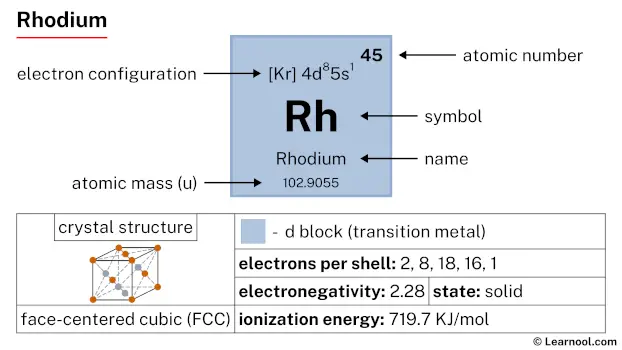 Rhodium |
46 Pd  Palladium |
47 Ag  Silver |
48 Cd 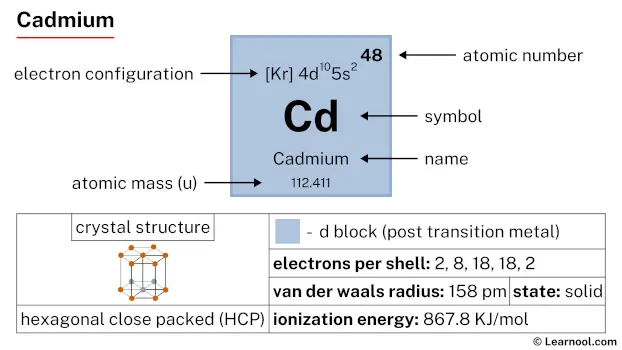 Cadmium |
49 In 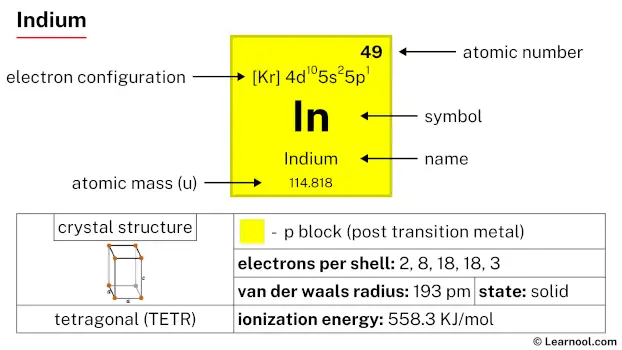 Indium |
50 Sn 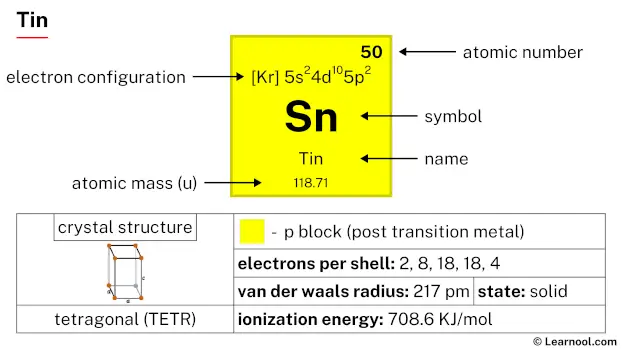 Tin |
51 Sb 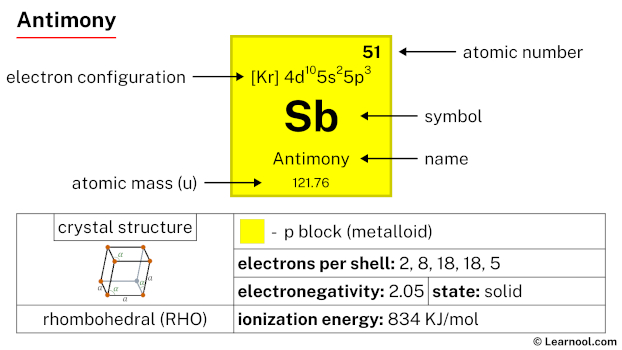 Antimony |
52 Te 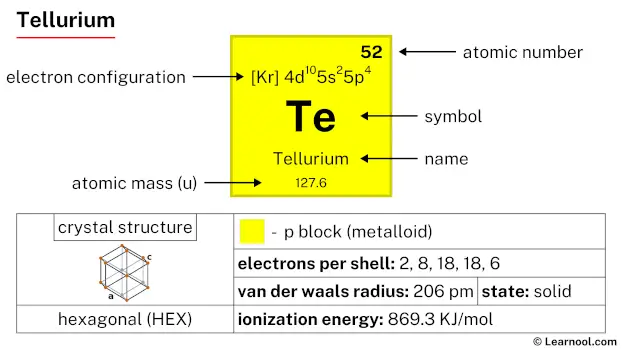 Tellurium |
53 I 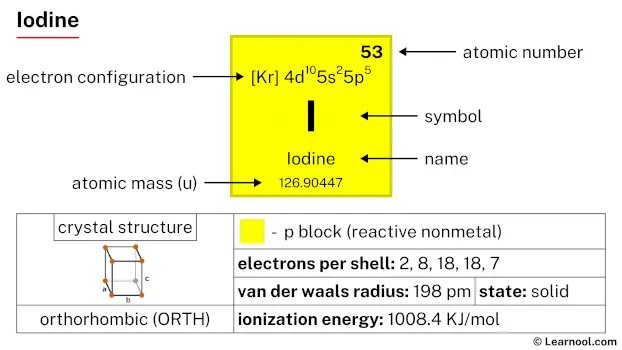 Iodine |
54 Xe 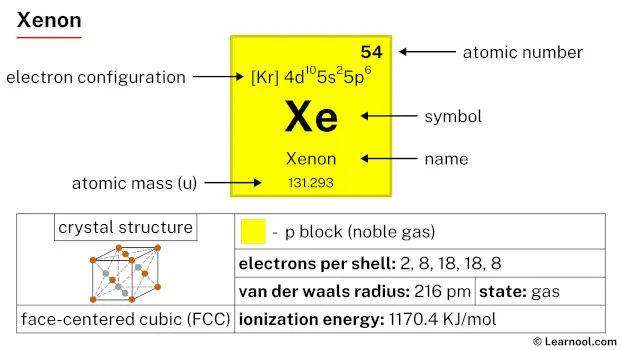 Xenon |
|
| 6 | 55 Cs 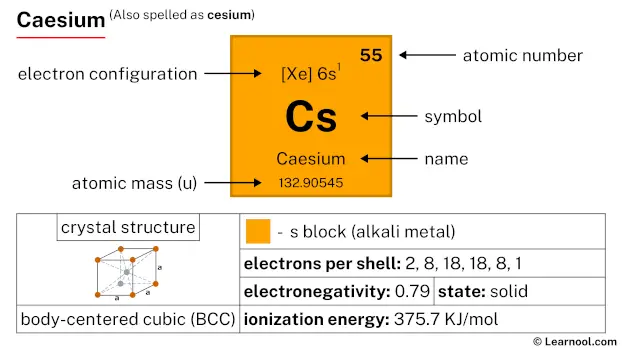 Caesium |
56 Ba 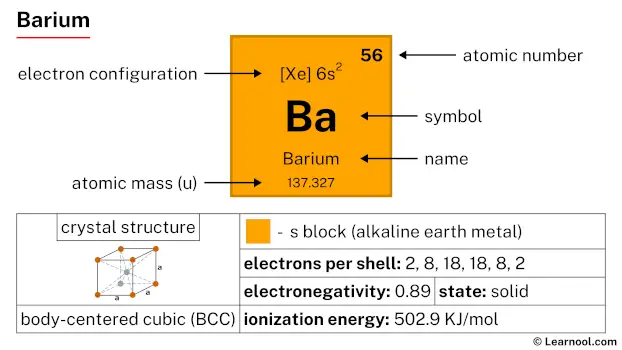 Barium |
72 Hf 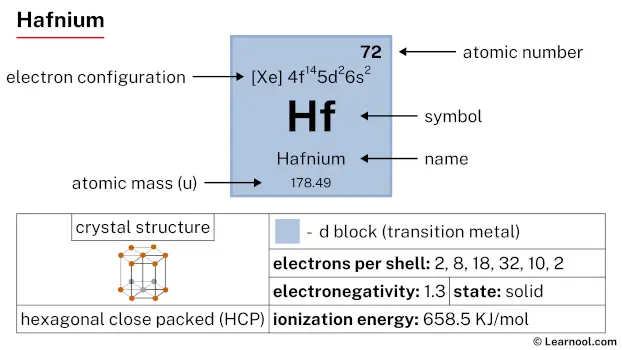 Hafnium |
73 Ta 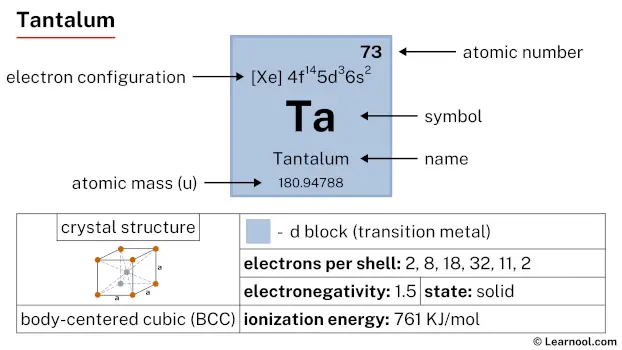 Tantalum |
74 W 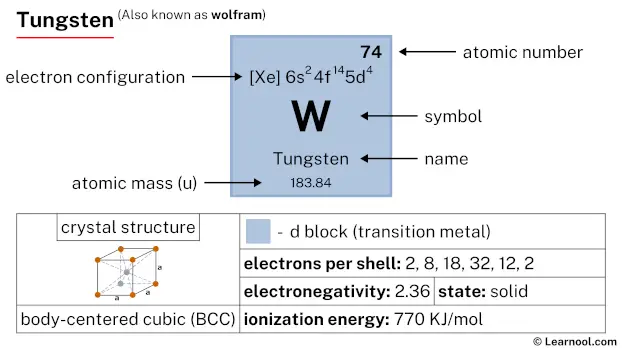 Tungsten |
75 Re 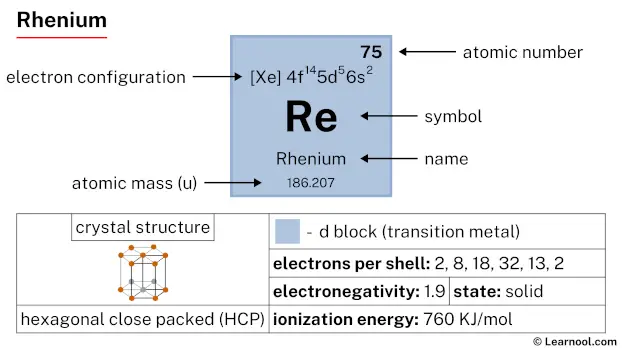 Rhenium |
76 Os 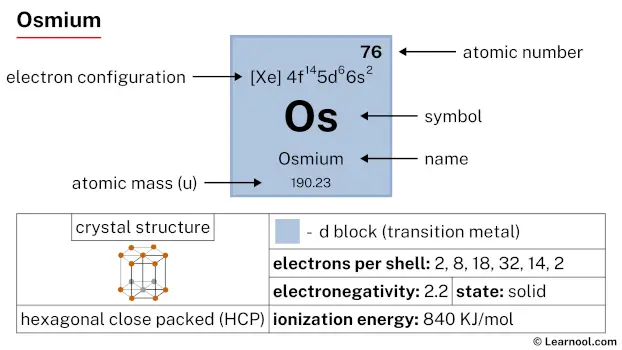 Osmium |
77 Ir 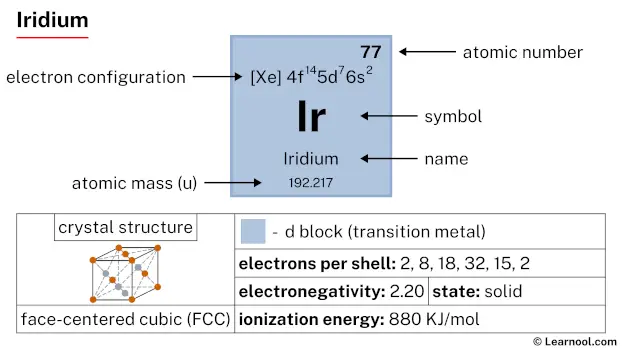 Iridium |
78 Pt  Platinum |
79 Au  Gold |
80 Hg 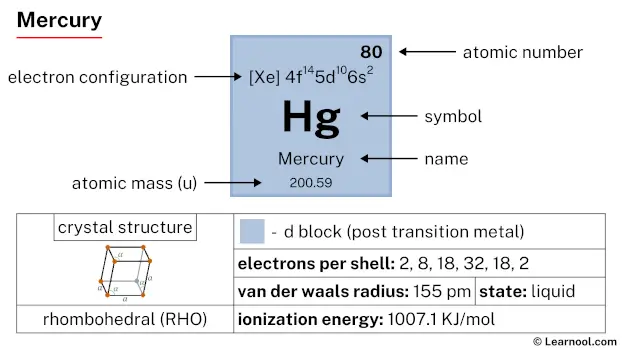 Mercury |
81 Tl 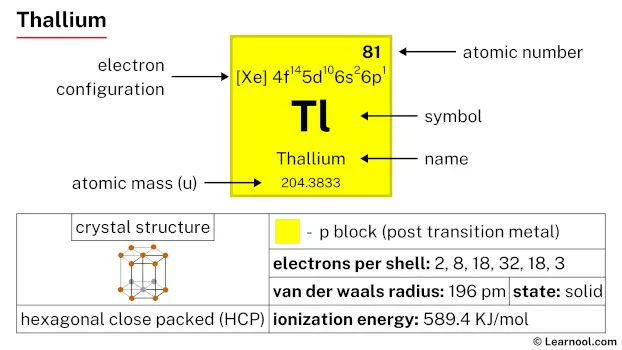 Thallium |
82 Pb  Lead |
83 Bi 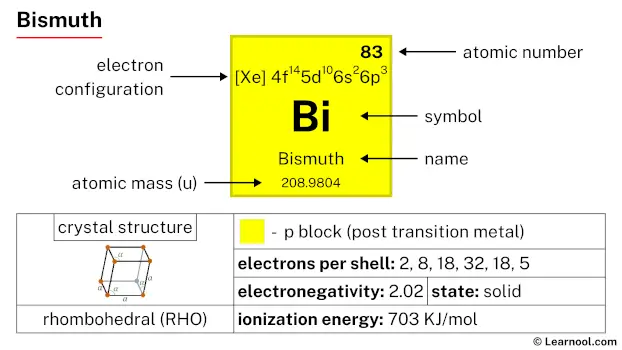 Bismuth |
84 Po 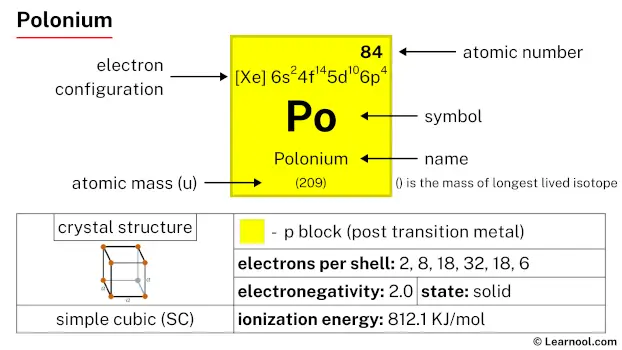 Polonium |
85 At 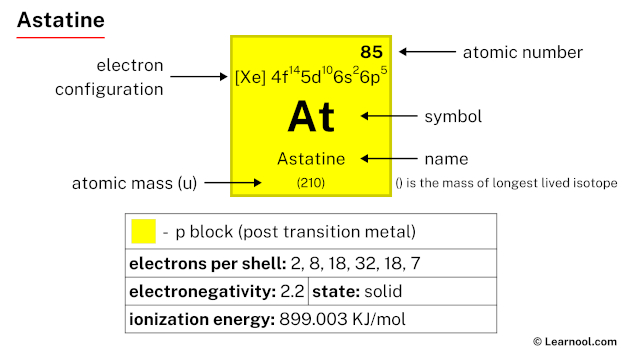 Astatine |
86 Rn 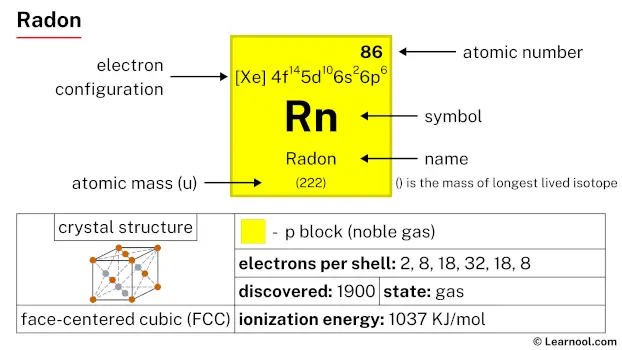 Radon |
||
| 7 | 87 Fr 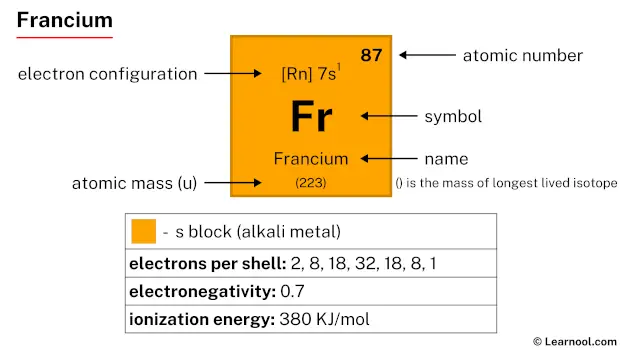 Francium |
88 Ra 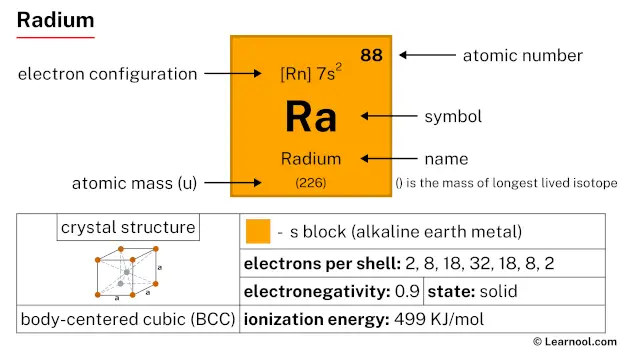 Radium |
104 Rf 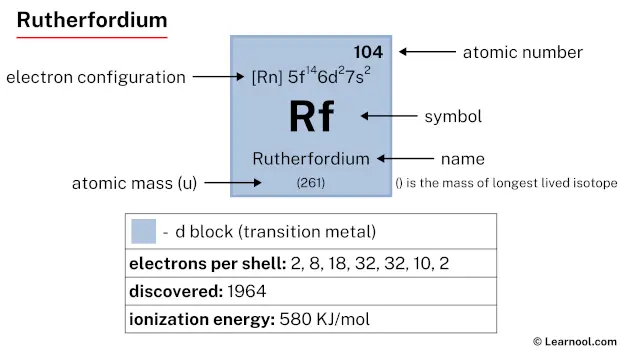 Rutherfordium |
105 Db 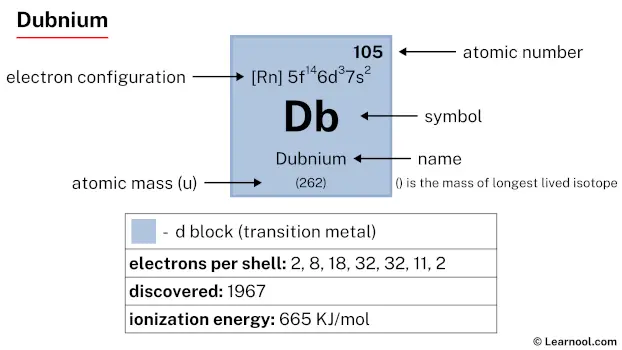 Dubnium |
106 Sg 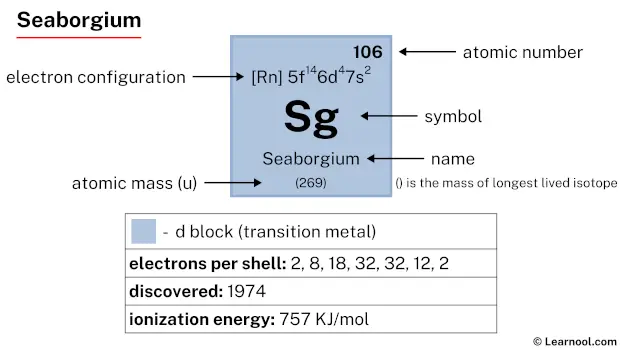 Seaborgium |
107 Bh 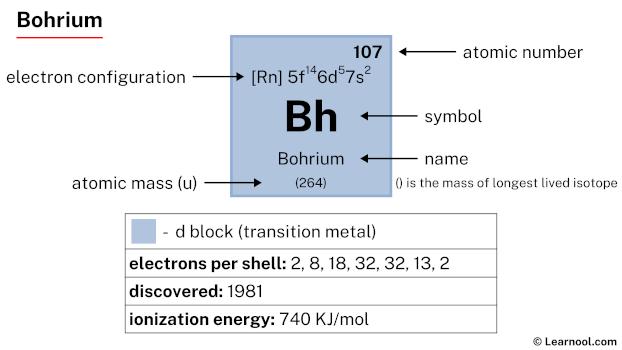 Bohrium |
108 Hs 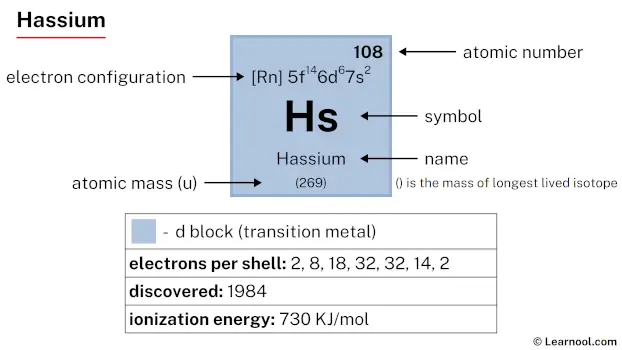 Hassium |
109 Mt 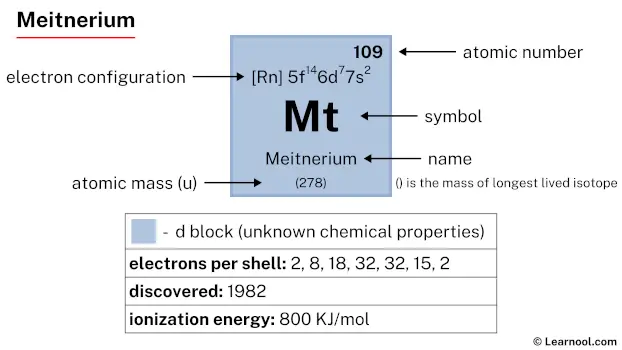 Meitnerium |
110 Ds 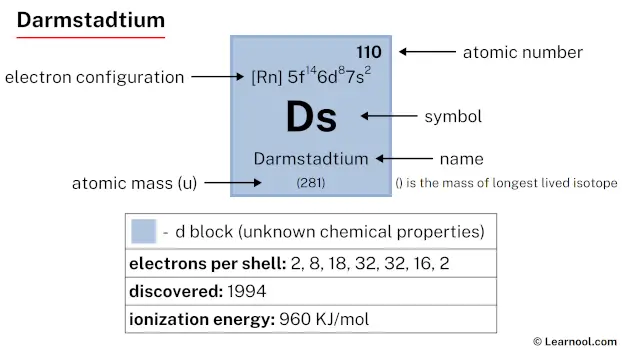 Darmstadtium |
111 Rg 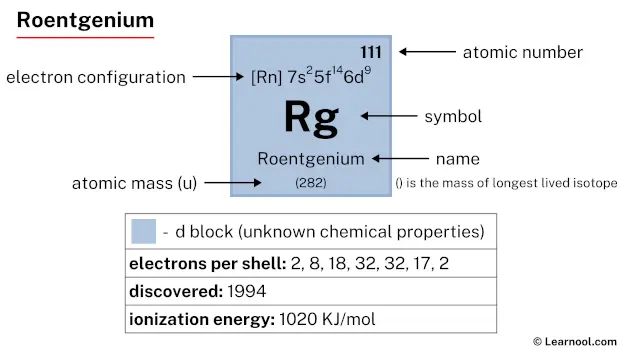 Roentgenium |
112 Cn  Copernicium |
113 Nh 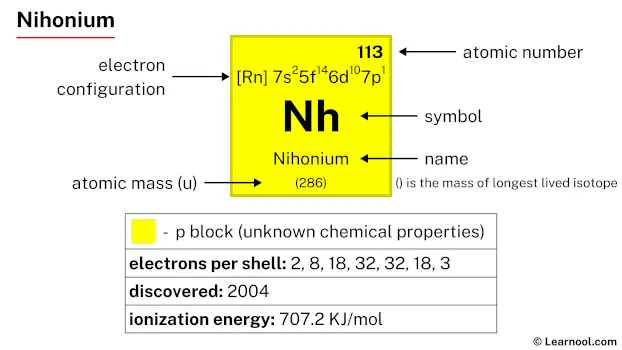 Nihonium |
114 Fl 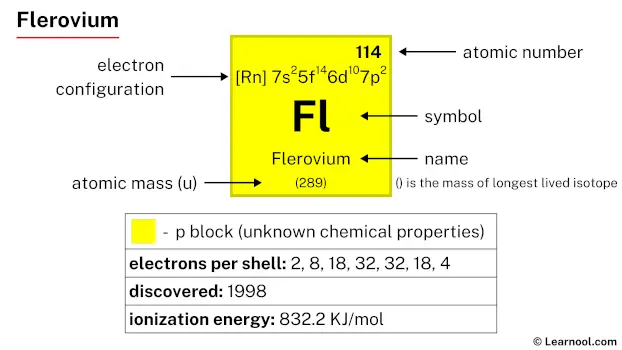 Flerovium |
115 Mc 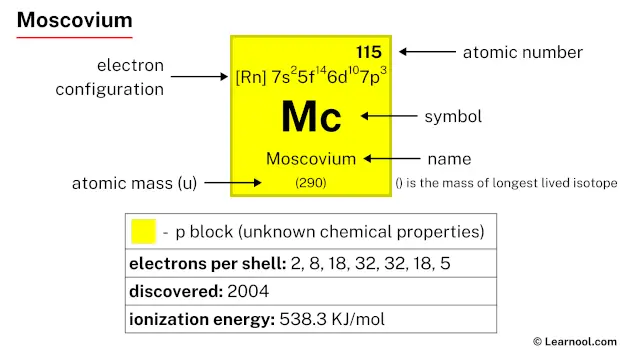 Moscovium |
116 Lv 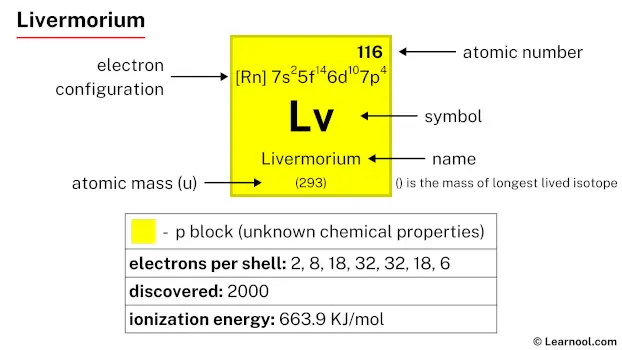 Livermorium |
117 Ts 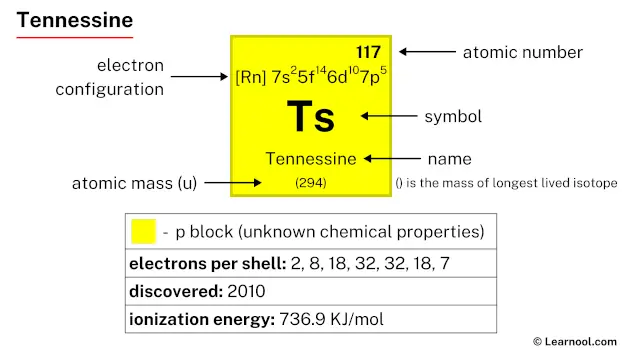 Tennessine |
118 Og 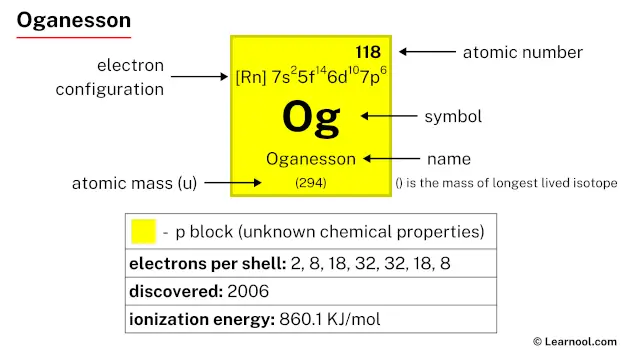 Oganesson |
||
| 57 La 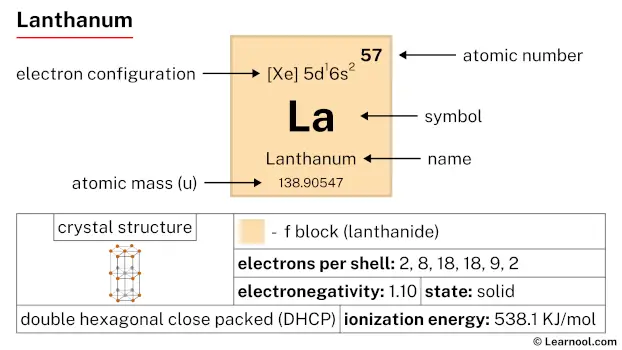 Lanthanum |
58 Ce 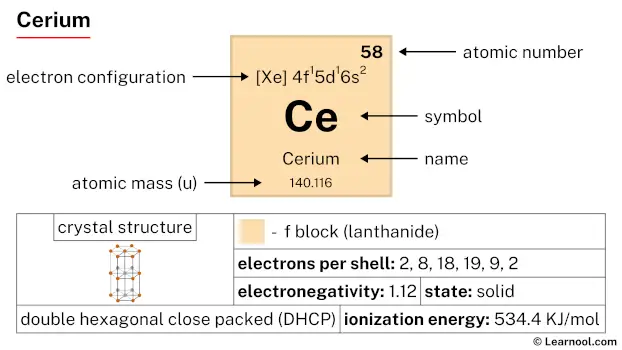 Cerium |
59 Pr 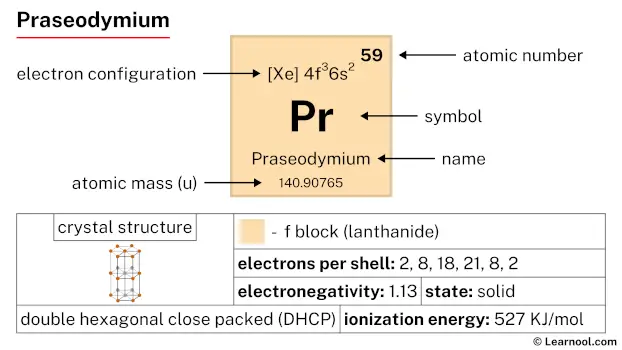 Praseodymium |
60 Nd 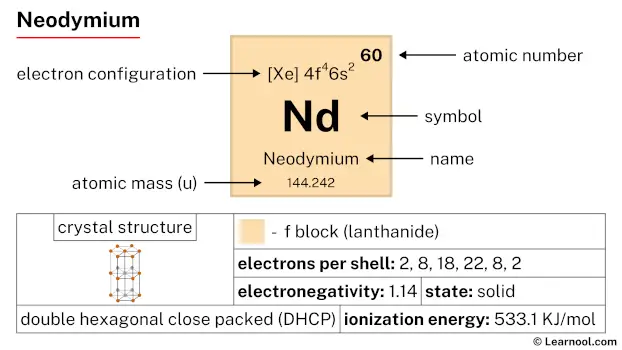 Neodymium |
61 Pm 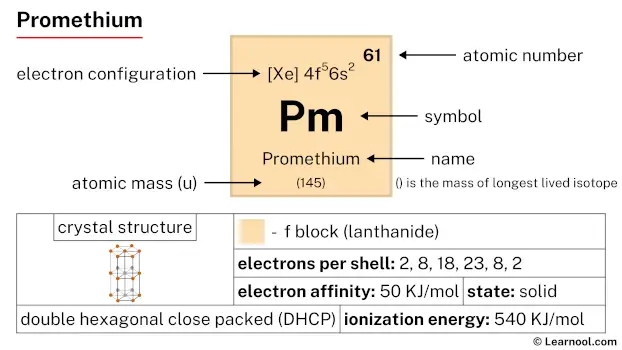 Promethium |
62 Sm 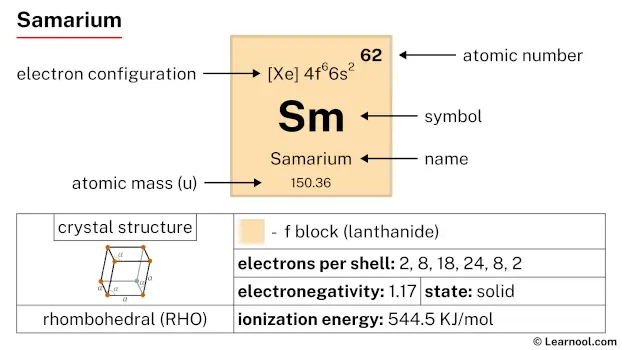 Samarium |
63 Eu 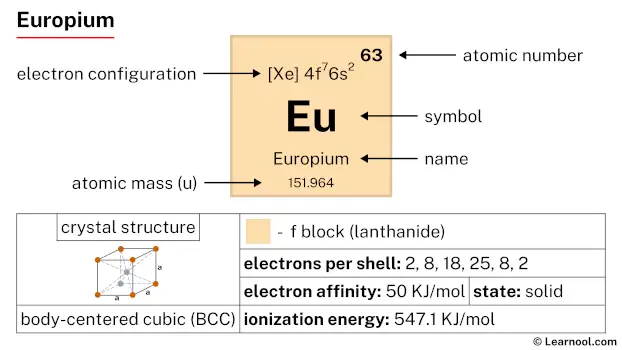 Europium |
64 Gd 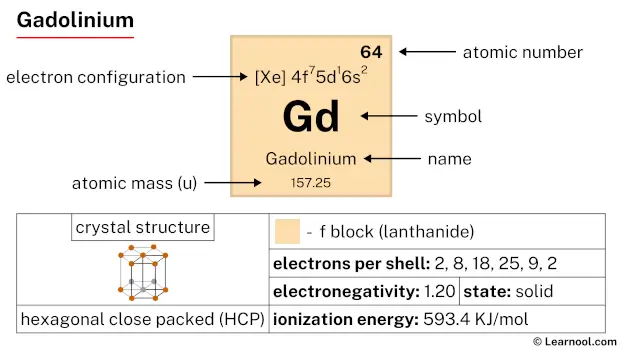 Gadolinium |
65 Tb 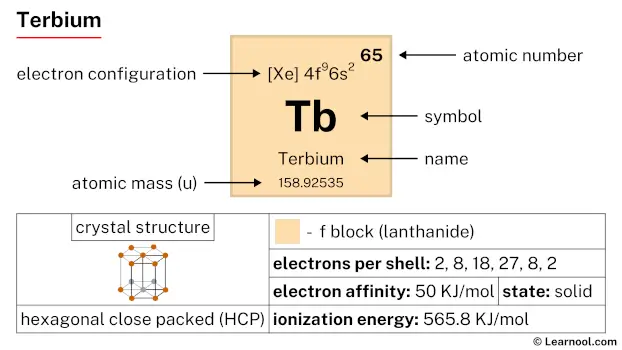 Terbium |
66 Dy 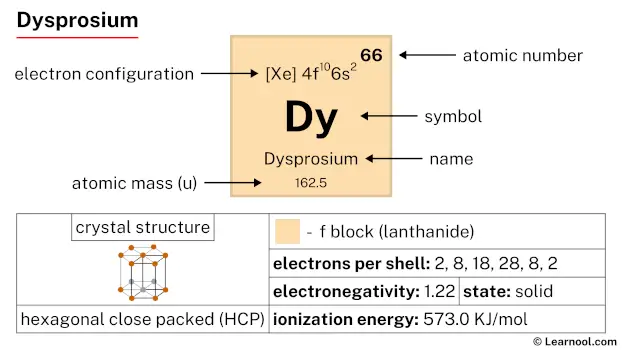 Dysprosium |
67 Ho 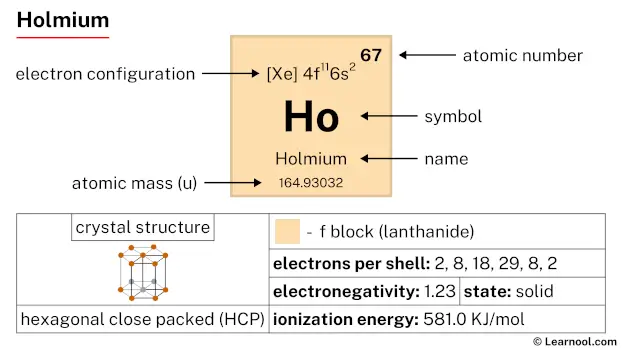 Holmium |
68 Er 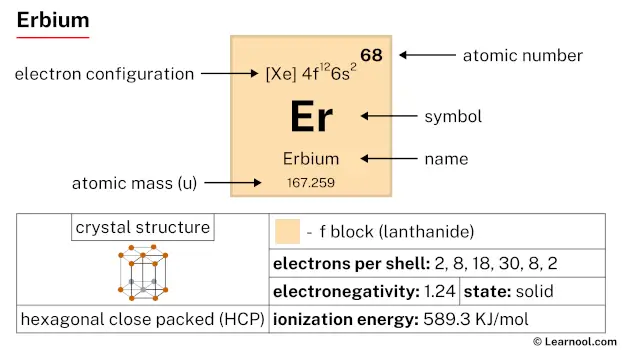 Erbium |
69 Tm 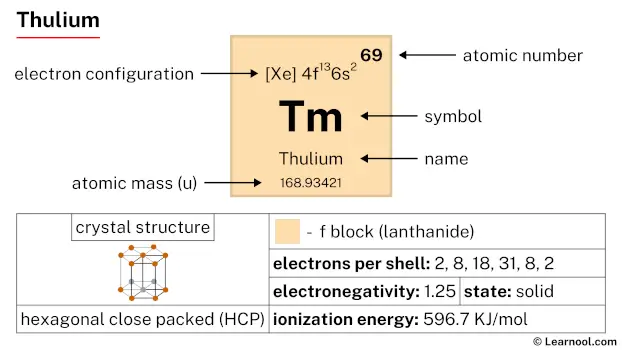 Thulium |
70 Yb 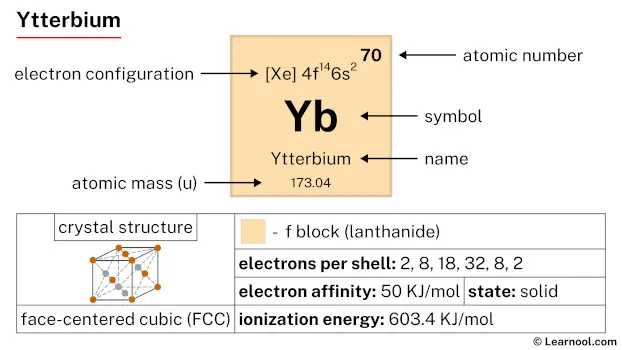 Ytterbium |
71 Lu 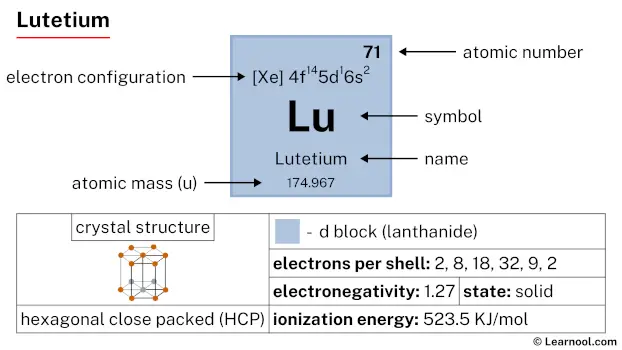 Lutetium |
|||||
| 89 Ac 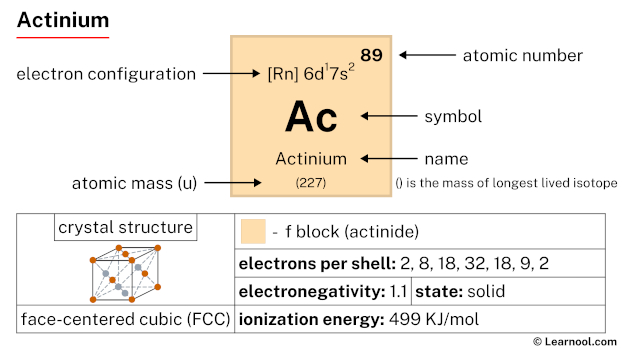 Actinium |
90 Th 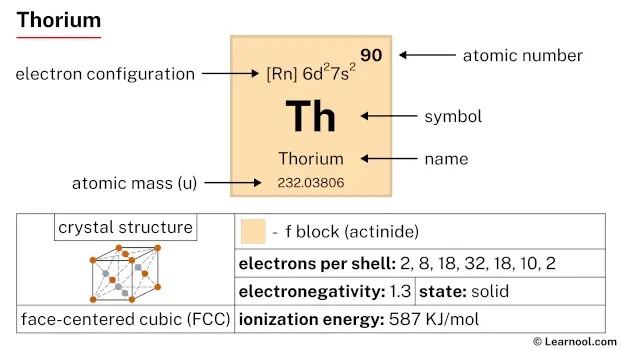 Thorium |
91 Pa 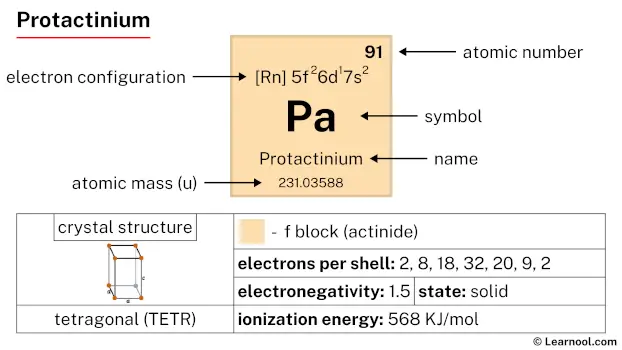 Protactinium |
92 U 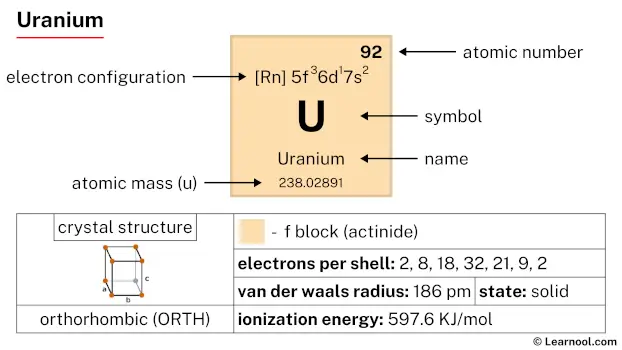 Uranium |
93 Np 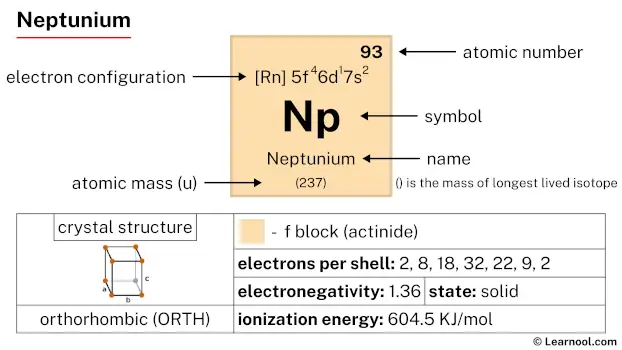 Neptunium |
94 Pu 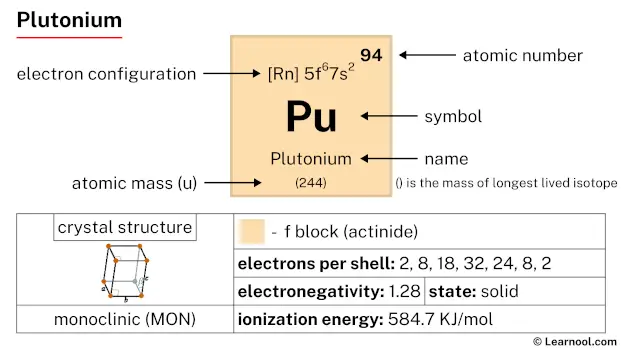 Plutonium |
95 Am  Americium |
96 Cm 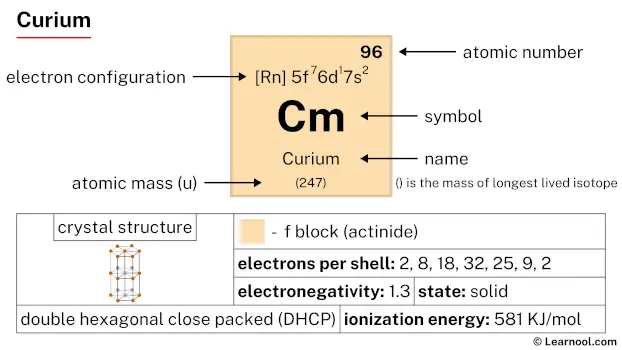 Curium |
97 Bk 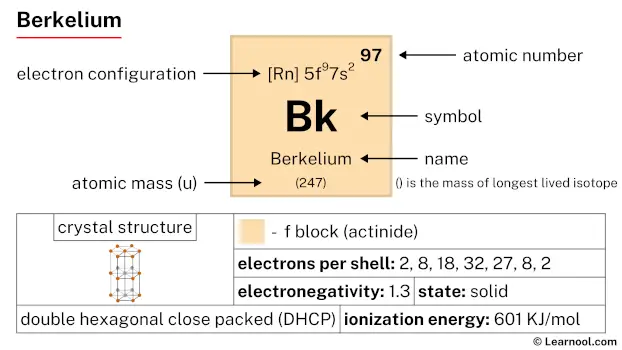 Berkelium |
98 Cf 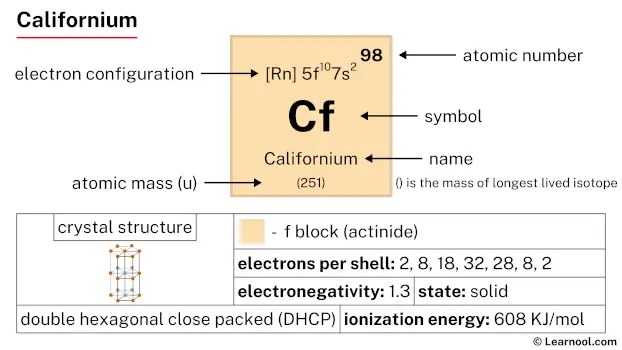 Californium |
99 Es 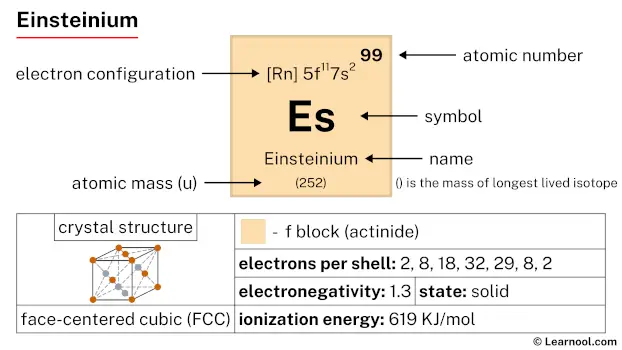 Einsteinium |
100 Fm 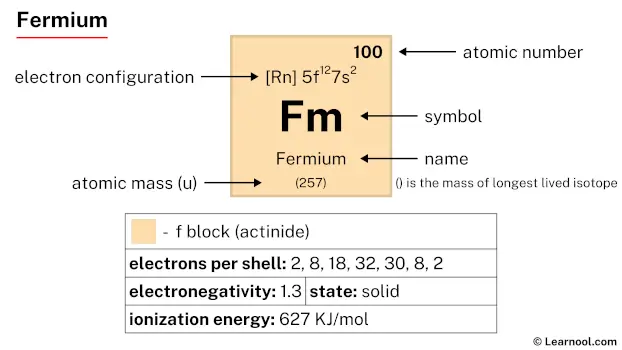 Fermium |
101 Md 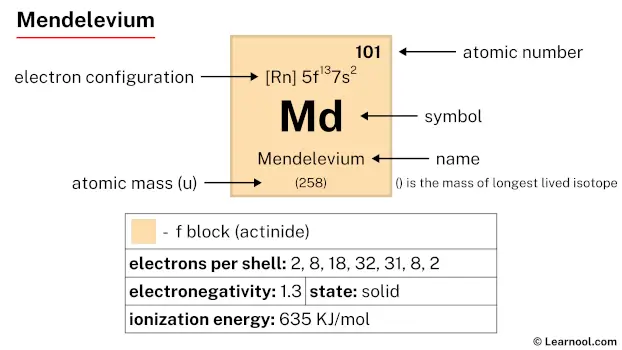 Mendelevium |
102 No 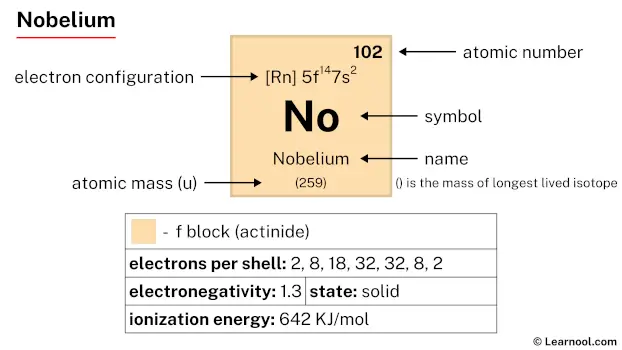 Nobelium |
103 Lr 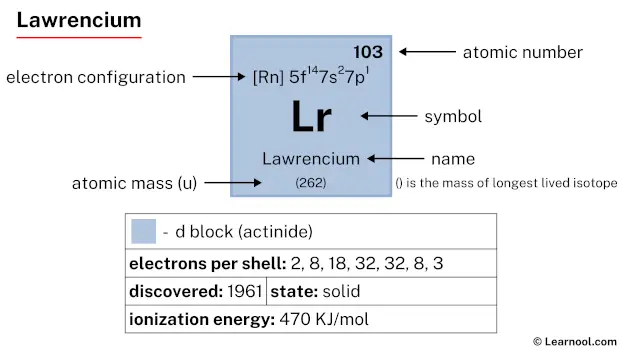 Lawrencium |
|||||
| – synthetic element |
On the periodic table, there are 24 chemical elements – from americium (95) to oganesson (118) – that are classified as synthetic, as they are produced through artificial means.
Related
More topics
- Transuranium element
- Superheavy element
- Rare-earth element
- Synthetic element
- Main-group element
- Inner transition metal
External links
- Synthetic element – Wikipedia
- The synthetic elements at the end of the periodic table – Nature Journal
- Naturally-Occurring and Synthetic Elements – Angelo State University
- Element, artificial – ENS – European Nuclear Society
- The Synthetic Elements in The Transition Metals Series – American Chemistry Council
- Synthetic element: Definition – Breaking Atom
- Synthetic element – Chem Europe
- synthetic elements – Encyclopedia.com
- General Chemistry/Chemistries of Various Elements/Synthetic Elements – Wikibooks
- About: Synthetic element – DBpedia
- How scientists made a new chemical element, explained in GIFs – Vox
- Synthetic Elements | The Periodic Table – Oxford Academic
- The weird ways extraordinary scientists made synthetic elements – BBC Science Focus
- A Complete List of Man-made Synthetic Elements – Science Struck
- Why do we make synthetic elements? – Quora
- Video: What lies at the end of the periodic table? – C&EN
- The Synthetic Elements – Scientific American
- Is there an abundance threshold of a ‘synthetic’ element for it to be considered natural? – Chemistry Stack Exchange
- Synthetic and genomic regulatory elements reveal aspects of cis-regulatory grammar in mouse embryonic stem cells – National Institutes of Health (.gov)
- synthetic elements – InfoPlease
- ELI5: How are synthetic elements considered elements? – Reddit
- The Eight New Synthetic Elements – eScholarship
- Man-made Elements – DuPont
- Synthetic Element – Academic Accelerator
- Where would you find synthetic elements on the periodic table? – Quora
- Synthetic element – Elements Wiki | Fandom
- synthetic element – Wiktionary
- How were the synthetic elements discovered? – Homework.Study.com
Deep
Learnool.com was founded by Deep Rana, who is a mechanical engineer by profession and a blogger by passion. He has a good conceptual knowledge on different educational topics and he provides the same on this website. He loves to learn something new everyday and believes that the best utilization of free time is developing a new skill.
